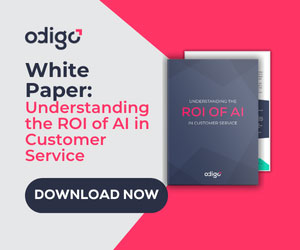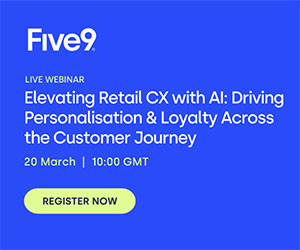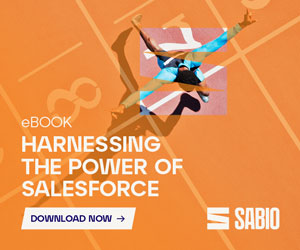Q&A with Plantronics designers
Lead designers Soohyun Ham and Karim Damji answer key questions on how Plantronics created the all-new EncorePro Family. From putting themselves in the customer’s shoes to future gazing, they explain what inspired one of the most advanced contact center headsets available.
Where do you find inspiration for your designs?
Soohyun: Every process is different but I like to go and interview people. Individually we are designers so we’re knowledge workers. Some are surfers. Some are bikers. But we are never the customer service representatives. So how do you really have empathy? The designer has to be like an actor sometimes – you have to play a role.
That’s why we like to go and meet people, talk to them and see what they’re wearing, what their hobbies are, or how they’re working. The first thing we do is kind of like character research. After that we can come back to the office and brainstorm. But to me that first thing, character research, is the most essential part.
Karim: With a contact center headset, it is going to be worn for hours and hours. So you need to make sure that there is good design because these are very ‘on-person’, intimate devices.
Also, audio fidelity is really important because if you can’t hear or be heard, you’re already compromising your experience. And then there is intelligence. We have been looking at ways to make the headset more intelligent because connected devices and connected platforms are very relevant in day-to-day business operations
We looked at all these elements as inspiration for what we needed to do when designing new headsets and audio systems.
How does the design process work at Plantronics?
S: So, you start with the customers. You investigate what some of their needs are. We like to go and talk to the end users so we can remember the faces of the people we meet when we’re designing. Then we design something for those people, or what they represent, not just to a technical specification.
EncorePro was actually three years in the making, including research. We went on customer visits and this took about a year, visiting all these different sites. At that time, we weren’t designing anything. We were just learning.
Then we came back and started designing – which took about four or five months. We had a number of designers working full-time on the headset. They had their own concepts and we liked elements of each so it was really a collective, collaborative effort.
Then we went into the full program – that’s when more people got involved, like engineering and manufacturing.
K: We have people that actually do a significant amount of human factor study for every design of every headset that Plantronics produces. And that includes looking at ear comfort, ear sizes. I mean, we have this thing called the Wall of Ears, which has approximately 2,000 ear samples. You can look it up on YouTube.
Even the LED lights. Red means mute or on hold. Green means on the call. These are very consistent elements that human beings are used to. Red means stop. Green means go. These human factors play an important role in how we design our headsets.
Looking at the new EncorePro Family in particular, where did some of the latest ideas come from?
S: We started with multiple concepts because we have a very talented, very experienced team of designers. And in the end we had to pick an overall concept that really spoke the Plantronics ‘language’ and also represented the needs of the users.
Fundamentally, we want users to feel very professional, very proud and very happy to wear it in the office. That empowers users to do a good job.
K: From the whole headset system perspective, we looked at some of the key trends. Contact centers are moving towards cloud-based environments. They are moving towards softphones rather than desk phones. They are moving towards heavy analytics. This is all happening at an accelerated pace.
When it came to the system design, the first question we asked ourselves was, ‘How can we make the headset relevant in this technology shift?’ The conclusion was that we had to support these trends – on the cloud side, on the analytics side, and on the softphone side.
What have you learned from contact centers that influenced the technology you included in the EncorePro Family?
S: You know, the contact center is one of those unknowns for many people. People understand what they are because when they call or get called from a contact center. But most have never actually seen the inside of one. And once you get inside a contact center, you really gain so much more of an understanding of the people who work there. You see who they are, what they look like, how they talk.
That made us think that they deserve really nice looking headsets. So the professional look of EncorePro – ”the design language – does this. Because if you look good, you feel good. And if you feel good, you do a better job.
K: We also considered the omni-channel experience of customers. Self-service channels – mobile, web, or social – are growing astronomically. So what happens when you do call a customer service line? That interaction has to be very rich.
The good news is that our devices – like the EncorePro – are at the nexus of that interaction. When you’re at that nexus, you are in a position to collect a lot of very interesting information.
Let me give you an example. You can monitor the amount of silence on a call. But you then have to apply this data set to how you operate as a contact center. Do you like to pitch to your customers? If so, perhaps it’s normal that they say very little so far-end silence isn’t a problem. But what if the silence is at the near-end, with the customer service representative [CSR]? If you prefer to pitch to customers but your CSR isn’t saying anything then how are you going to convert your sales leads? This information can help improve training and your success rates.
It’s all in the intelligence of the system. It’s using an EncorePro headset with one of our digital audio processors, which connect to the USB port in the softphone, to get the intelligence you need.
What’s your favourite feature in the new EncorePro Family and why?
S: Let’s see, I have to think about that. I mean, the consistent color and finished treatment with the new copper. Even though it’s not really a lot of color, and it seems cosmetic, I actually think it’s the finishing touch. It kind of ties all the EncorePro Family headsets together, even though they are different designs and have a different purpose. From the audio processor to the convertible and over-the-head headsets – it’s what makes the whole family look complete.
K: One of the most important things you can do with the EncorePro on a softphone connection is to understand more about the user. Knowing they are available and the levels of outbound and receive audio. The latter especially helps you understand the health of your conversations with your customers, which is all related to customer satisfaction.
How do you know people are actually going to use all these new innovations?
S: Take the convertible type body of the new EncorePro as an example. This line is really hard to get right because there are so many parts. We looked at what we’d been doing before, what the competition had been doing and then we created a comparison video. We were like, ‘Wow, how many steps? How many parts?’ Getting it right, making it comfortable in every single wearing style – that’s very challenging. So we came up with a very simple snap design.
Now there’s very little way that a user can put the headset together the wrong way because the snap clip only works one way. If you want to move the boom from the left to the right-hand side, you don’t have to take anything off. So there’s less chance of it not fitting together properly. In our eyes, simplicity solved the problem of users being uncomfortable or not using the headset in the best way.
K: From any product design perspective, the last thing you want to do is to build something that is not going to be used, right? So when we look at a viable product for any particular concept, we have a validation process that involves extensive customer interviews. We walk them through the designs and the features. We say, ‘This is what we are evolving based on the issues you have told us about in the past. This is our response.’ We’re trying to solve some real market issues rather than trying to guess what those issues might be.
What does the future hold for the headset? What’s next for you guys?
S: When you go to contact centers, there are people there from the age of 18 to 60. Their demands vary dramatically. Do you think an 18-year old would want to wear the same thing as a 60-year old? If we can come up with a design that could be tailored for specific groups of people, this will make things very, very interesting. It’s just not yet as practical for us or for the buyers or the supervisors. But if you could connect the end users to designing their own headsets, that would be awesome.
K: Looking to the future, the data that headsets might provide will play a key role in communications-based business processes. Especially as voice transactions are becoming more and more valuable across customer interactions. So the intelligent headset really is going to become an imperative for richer customer interactions.
Technology Innovation for the Contact Center Headset was last modified: March 7th, 2016 by
Author: Guest Author
Published On: 9th Mar 2016 - Last modified: 6th Feb 2019
Read more about - Archived Content


























